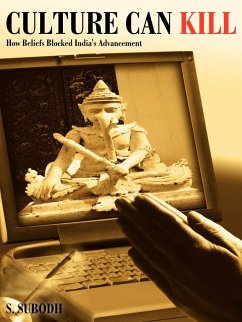
Kill Your Enemy
Representations of Enmity from Twentieth Century Warfare to the War on Terror
Versandkostenfrei!
Versandfertig in 6-10 Tagen
39,99 €
inkl. MwSt.

PAYBACK Punkte
20 °P sammeln!
The 21st Century began with the declaration of theWar on Terror. Since then, over a million people havedied as a direct result of the war in Afghanistan andIraq. The book analyzes the mechanisms oflegitimation that enabled such massive and uncounteddeaths. It begins by looking at twentiethcentury warfare. It investigates international andnational laws, advanced warring technology, media andstate propaganda, and argues that these structureshave enabled and legitimated the killing of innocentpopulations around the world. The book focuses onWWII, the Holocaust, the Vietnam War, the Gulf Warand th...
The 21st Century began with the declaration of the
War on Terror. Since then, over a million people have
died as a direct result of the war in Afghanistan and
Iraq. The book analyzes the mechanisms of
legitimation that enabled such massive and uncounted
deaths. It begins by looking at twentieth
century warfare. It investigates international and
national laws, advanced warring technology, media and
state propaganda, and argues that these structures
have enabled and legitimated the killing of innocent
populations around the world. The book focuses on
WWII, the Holocaust, the Vietnam War, the Gulf War
and the War on Terror. It aims to shed light on the
different mechanisms that sanction massive killing in
wartime. It is especially useful to university
students, in addition to anyone who is interested in
conflict, war codes, extreme death and torture, media
war coverage and representations, modern warfare and
the War on Terror.
War on Terror. Since then, over a million people have
died as a direct result of the war in Afghanistan and
Iraq. The book analyzes the mechanisms of
legitimation that enabled such massive and uncounted
deaths. It begins by looking at twentieth
century warfare. It investigates international and
national laws, advanced warring technology, media and
state propaganda, and argues that these structures
have enabled and legitimated the killing of innocent
populations around the world. The book focuses on
WWII, the Holocaust, the Vietnam War, the Gulf War
and the War on Terror. It aims to shed light on the
different mechanisms that sanction massive killing in
wartime. It is especially useful to university
students, in addition to anyone who is interested in
conflict, war codes, extreme death and torture, media
war coverage and representations, modern warfare and
the War on Terror.












